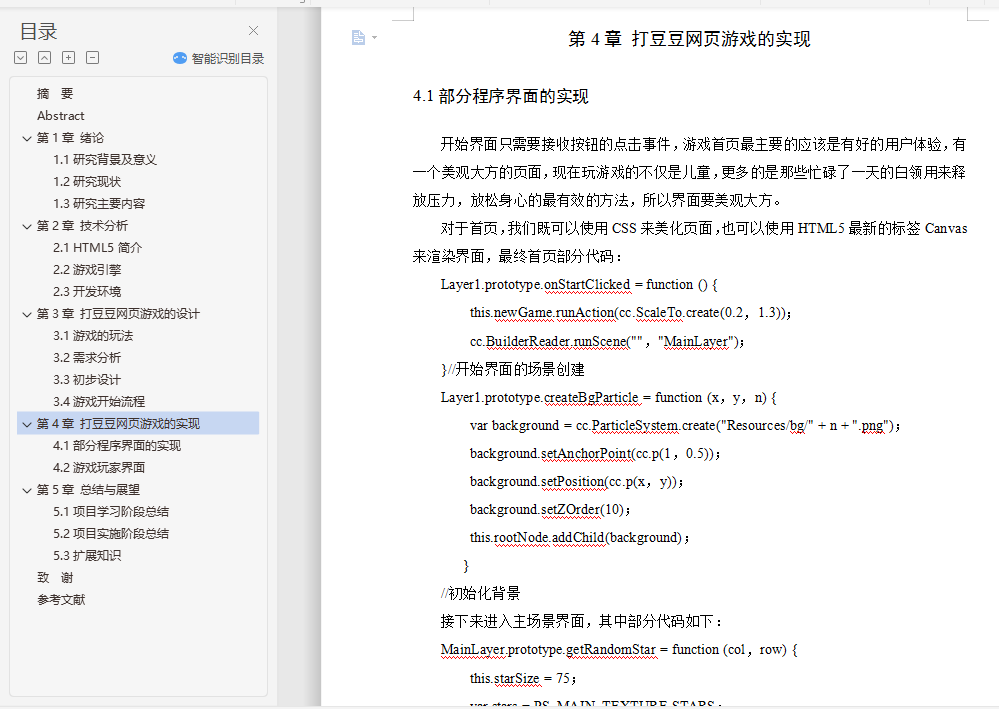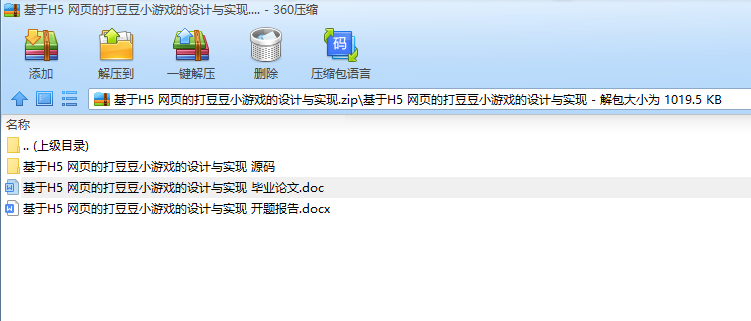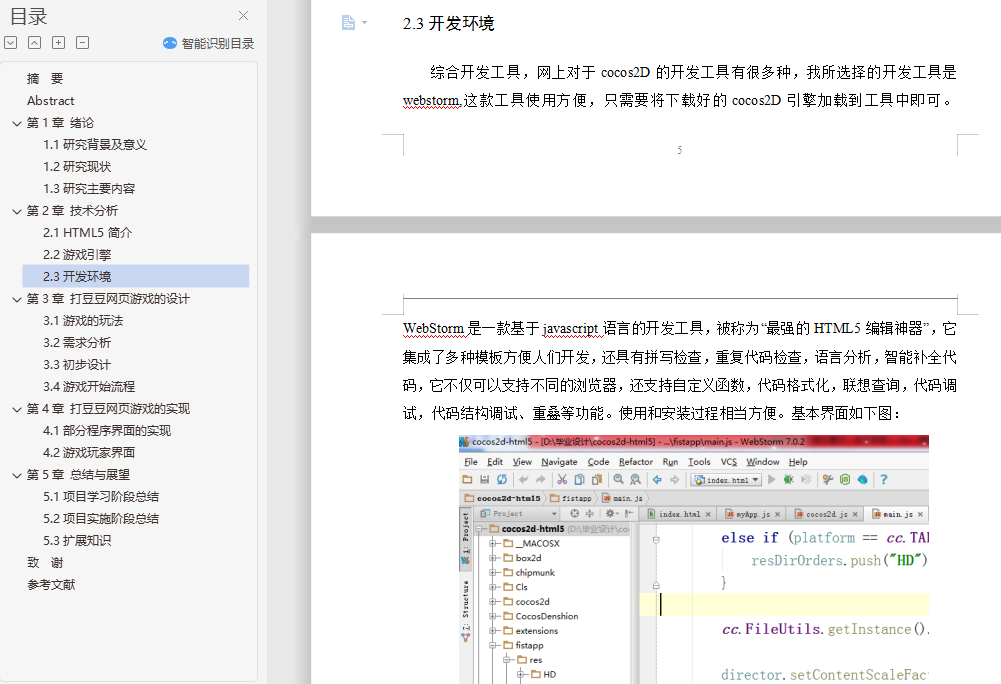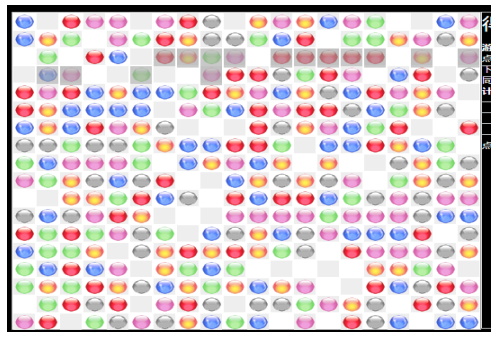摘 要
网页游戏是一个用现实包装的快感反馈引擎,它的根本目的始终是让玩家能够得到舒畅的体验为了娱乐心神,所以开发出大家喜欢的,高品质的休闲游戏会受到人们的普遍欢迎。打豆豆小游戏这款游戏主要是利用css、js、canvas等前端知识增强游戏自身的趣味性、易掌握性、可中断性、交互性,能在人们工作学习之余,享受到游戏的快乐。HTML5具有很多新的特性,最主要的还是它具有跨平台兼容性,不仅可以在电脑上运行,还可以在移动终端运行,不仅如此HTML5中的Canvas元素可以使浏览器直接创建并处理图像,减轻了开发人员的负担,而且使界面更加美观,具有很好的用户体验。减少了用户刷新页面的时间,得到了更多人的认可,因此基于HTML5所制作的游戏也就成了很多人的研究课题。本文通过介绍HTML5的一些特性,以及对游戏引擎的学习,比如cocos2d,unity3d等的认识,并通过当下比较流行的打豆豆游戏的研发过程分析来使HTML5的内容更加形象,并对HTML5的前景做了一些分析。
关键词:HTML5;打豆豆;游戏引擎;cocos2d;unity3d;
Abstract
Web game is a real-life package of pleasure feedback engine,its fundamental purpose is to allow players to get a comfortable experience in order to entertain the mind,so the development of people like,high-quality leisure games will be popular. This game is mainly to use css,js,canvas and other front-end knowledge to enhance the game itself interesting,easy to master,interruptible,interactive,can work in people to learn,enjoy the fun of the game. HTML5 has many new features,most importantly it has cross-platform compatibility,not only on the computer,but also on the computer to run at mobile terminals,not only can the canvas elements in html5 enable browsers to create and process images directly,reducing the burden on developers,but also making the interface more beautiful with a good user experience. The game based on HTML5 has become a research topic for a lot of people because it has reduced the time for users to refresh their pages and gained more recognition. This article introduces some features of HTML5,as well as the learning of game engine,such as cocos2d,unity3d and so on,and analyzes the research and development process of the popular bean game The content of HTML5 is more vivid,and the prospects of HTML5 are analyzed.
Keywords: HTML5;Beat beans;Game engine;Cocos2d;unity3d;
目 录
摘 要 I
Abstract II
第1章 绪论 1
1.1研究背景及意义 1
1.2研究现状 2
1.3研究主要内容 3
第2章 技术分析 4
2.1 HTML5简介 4
2.2游戏引擎 4
2.3开发环境 5
第3章 打豆豆网页游戏的设计 7
3.1游戏的玩法 7
3.2需求分析 7
3.3初步设计 7
3.4游戏开始流程 9
第4章 打豆豆网页游戏的实现 11
4.1部分程序界面的实现 11
4.2游戏玩家界面 14
第5章 总结与展望 17
5.1项目学习阶段总结 17
5.2项目实施阶段总结 17
5.3扩展知识 18
致 谢 19
参考文献 20












